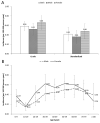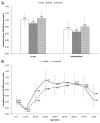Incidence and prevalence of moyamoya disease in urban China: a nationwide retrospective cohort study
- PMID: 33941642
- PMCID: PMC8717778
- DOI: 10.1136/svn-2021-000909
Incidence and prevalence of moyamoya disease in urban China: a nationwide retrospective cohort study
Abstract
Background and objective: Moyamoya disease (MMD) is an increasingly recognised cause of stroke, mainly described in East Asia. China is the largest nation in Asia, but few studies reported the epidemiology of MMD, especially at a national level. We aimed to estimate the incidence and prevalence of MMD in China.
Methods: We performed a population-based study using data from the national databases of Urban Basic Medical Insurance between 2013 and 2016, covering approximately 0.50 billion individuals. MMD cases were identified by diagnostic code (International Classification of Diseases, 10th Revision I67.5) or related diagnostic text.
Results: A total of 1987 MMD patients (mean age 44.45±14.30 years, female-to-male ratio 1.12) were identified, representing a national crude incidence of 0.59 (95% CI: 0.49 to 0.68) and a prevalence of 1.01 (95% CI: 0.81 to 1.21) per 100 000 person-years in 2016. Rates were higher in females than in males for the incidence (0.66 vs 0.52) and prevalence (1.05 vs 0.90). And the age-specific rates showed a bimodal distribution, with the highest peak in middle-aged group and the second peak in child group.
Conclusions: Our results confirm that MMD is relatively common in East Asians, but the rates in China were lower than those in other East Asian countries such as Japan and Korea. The unique epidemiological features, including a relatively weak female predominance and a shift in the highest peak of incidence from children to adults, revealed new sight into MMD. Further research is expected to explore the potential pathogenesis of MMD.
Keywords: incidence; medical insurance database; moyamoya disease; prevalence.
© Author(s) (or their employer(s)) 2021. Re-use permitted under CC BY-NC. No commercial re-use. See rights and permissions. Published by BMJ.
Conflict of interest statement
Competing interests: None declared.
Figures


References
Publication types
MeSH terms
LinkOut - more resources
Full Text Sources
Other Literature Sources
